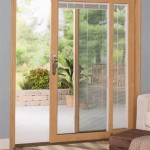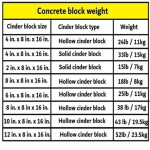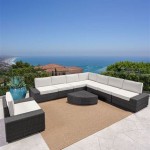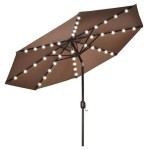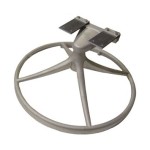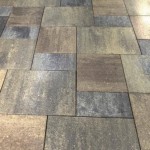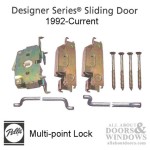Patio Sail Ideas: Designing Shade and Style for Your Outdoor Space
Patio sails, also known as shade sails, offer a versatile and aesthetically pleasing solution for providing shade and protection from the sun in outdoor living spaces. Beyond their functional benefits, they can dramatically enhance the visual appeal of a patio, deck, garden, or pool area. This article explores various patio sail ideas, covering design considerations, installation techniques, and material options, empowering individuals to create a custom shade solution that perfectly complements their lifestyle and property.
Understanding the Basics of Patio Sails
Before delving into specific design ideas, it's crucial to understand the fundamental aspects of patio sails. These sails are typically constructed from durable, water-resistant fabrics like high-density polyethylene (HDPE) or woven polyester shade cloth. The fabric is cut and sewn into various shapes, most commonly triangles, squares, and rectangles, with reinforced edges and attachment points using stainless steel rings or buckles. These attachment points are then secured to sturdy anchor points, such as posts, walls, or existing structures, using ropes, cables, or specialized hardware.
The angle of the sail installation is critical. A steeper angle allows for better water runoff, preventing pooling and potential damage to the fabric. Proper tension is also essential to maintain the sail's shape and prevent sagging. This requires careful planning and the use of appropriate tensioning devices.
Furthermore, understanding the different types of fabrics available is paramount. HDPE shade cloth offers excellent UV protection and breathability, making it ideal for hot climates. Woven polyester provides greater strength and durability, but may not be as breathable. The choice of fabric will depend on the specific climate, desired level of shade, and aesthetic preferences.
Creative Design Ideas for Patio Sails
The design possibilities for patio sails are virtually endless, limited only by imagination and structural constraints. Here are several ideas to inspire the creation of a unique and functional outdoor space:
Overlapping Sails: Layering multiple sails of different shapes, sizes, and colors creates a dynamic and visually interesting effect. Overlapping sails provides enhanced shade coverage and adds depth to the design. Consider using contrasting colors to create a bold statement or complementary tones for a more subtle, cohesive look. The placement of overlapping sails should be carefully considered to maximize shade coverage during different times of the day.
Triangular Arrangements: Triangular sails are a popular choice due to their versatility and ease of installation. They can be arranged in numerous configurations, such as a single triangle providing shade over a small seating area or multiple triangles arranged in a fan-like pattern to cover a larger space. Using different sized triangles can create a more visually appealing and dynamic configuration.
Sail as a Focal Point: A single, large sail can serve as a striking focal point in the outdoor space. Consider using a bold color or unique shape to draw attention. The sail can be strategically positioned to highlight a particular feature of the landscape, such as a water feature or a landscaped garden bed. The size of the sail should be proportional to the overall size of the patio or outdoor area.
Incorporating Existing Structures: Patio sails can be seamlessly integrated with existing structures, such as pergolas, gazebos, or even the house itself. Utilizing existing support beams or walls as anchor points can simplify the installation process and create a more cohesive design. The sails can be used to fill gaps in the existing structure's shade coverage or to add a pop of color and visual interest.
Sail as a Privacy Screen: In addition to providing shade, patio sails can also be used to create a privacy screen. By strategically positioning the sails along the perimeter of the patio, it is possible to block unwanted views from neighbors or passersby. This is particularly useful in urban environments or in areas with close proximity to other buildings. The material used for the privacy screen should be opaque enough to effectively block views, while still allowing some light to filter through.
Illuminated Sails: Adding lighting to patio sails can transform the outdoor space into a magical oasis at night. String lights, spotlights, or even LED strips can be used to highlight the sails and create a warm and inviting ambiance. Careful consideration should be given to the type of lighting used, ensuring that it is weatherproof and energy-efficient. The lighting can be used to accentuate the shape of the sails or to create interesting patterns and shadows.
Combining Sails with Other Shade Structures: Patio sails can be effectively combined with other shade structures, such as awnings or umbrellas, to create a multi-layered shade system. This provides maximum protection from the sun and allows for greater flexibility in controlling the amount of shade in the outdoor space. The different shade structures can be coordinated in terms of color and style to create a cohesive and visually appealing design.
Key Considerations for Installation and Material Selection
The successful implementation of patio sail ideas depends heavily on proper installation and the selection of appropriate materials. Here are some key considerations to keep in mind:
Anchor Point Strength: The strength of the anchor points is paramount to ensuring the safety and stability of the patio sails. Anchor points must be able to withstand significant tension, especially in windy conditions. When using existing structures as anchor points, it is essential to assess their structural integrity and reinforce them if necessary. Concrete footings and sturdy posts are typically used for standalone anchor points. Consulting with a structural engineer is advisable, particularly for large sail installations or in areas prone to strong winds.
Sail Shape and Size: The shape and size of the sails should be carefully considered in relation to the area to be shaded. Larger sails provide greater shade coverage but require stronger anchor points and more complex installation techniques. The shape of the sail should also complement the overall design of the outdoor space. Triangular sails are generally easier to install, while square or rectangular sails may provide more efficient shade coverage in certain situations.
Material Durability and UV Protection: The choice of fabric should be based on the climate, desired level of shade, and aesthetic preferences. HDPE shade cloth offers excellent UV protection and breathability, making it ideal for hot climates. Woven polyester provides greater strength and durability, but may not be as breathable. The fabric should also be water-resistant and resistant to mold and mildew. Look for fabrics that are specifically designed for outdoor use and that have been treated with UV inhibitors to prevent fading and degradation.
Hardware Selection: The hardware used to attach the sails to the anchor points should be of high quality and specifically designed for outdoor use. Stainless steel rings, buckles, ropes, and cables are recommended for their durability and resistance to corrosion. Tensioning devices, such as turnbuckles or ratchet straps, are essential for maintaining the sail's shape and preventing sagging. The hardware should be properly sized to handle the load and tension of the sails.
Proper Tensioning Techniques: Applying the correct amount of tension to the sails is crucial for maintaining their shape and preventing sagging. Over-tensioning can damage the sails or the anchor points, while under-tensioning can result in a loose and unattractive appearance. It is important to follow the manufacturer's instructions for tensioning the sails and to use appropriate tensioning devices. Regularly inspect the sails for sagging and adjust the tension as needed.
Professional Installation: While smaller patio sail installations can be a DIY project, larger or more complex installations may require the expertise of a professional installer. A professional installer will have the knowledge and experience to properly assess the site, design the sail configuration, and install the sails safely and securely. They will also be able to provide guidance on material selection and maintenance.
By carefully considering these design and installation factors, individuals can create a patio sail solution that provides both functional shade and aesthetic appeal, enhancing the enjoyment of their outdoor living space for years to come.

Backyard Shade Sails Landscaping Network

Gallery Of S Shade Sail Projects For Design Layout Ideas

Six Garden Canopy Ideas For Big And Small Gardens Bbc Gardeners World
.png?strip=all)
8 Steps For Creating The Perfect Shade Sail

Backyard Shade Ideas

31 Shade Sail Ideas Inspiration For Uses Your Home Clara Sails

Shade Sail Ideas Patio S Usa

Patio Shade How To My Outdoor Living Tips

8 Steps For Creating The Perfect Shade Sail

Shade Sails For Your Spa Installation Master Spas Blog

